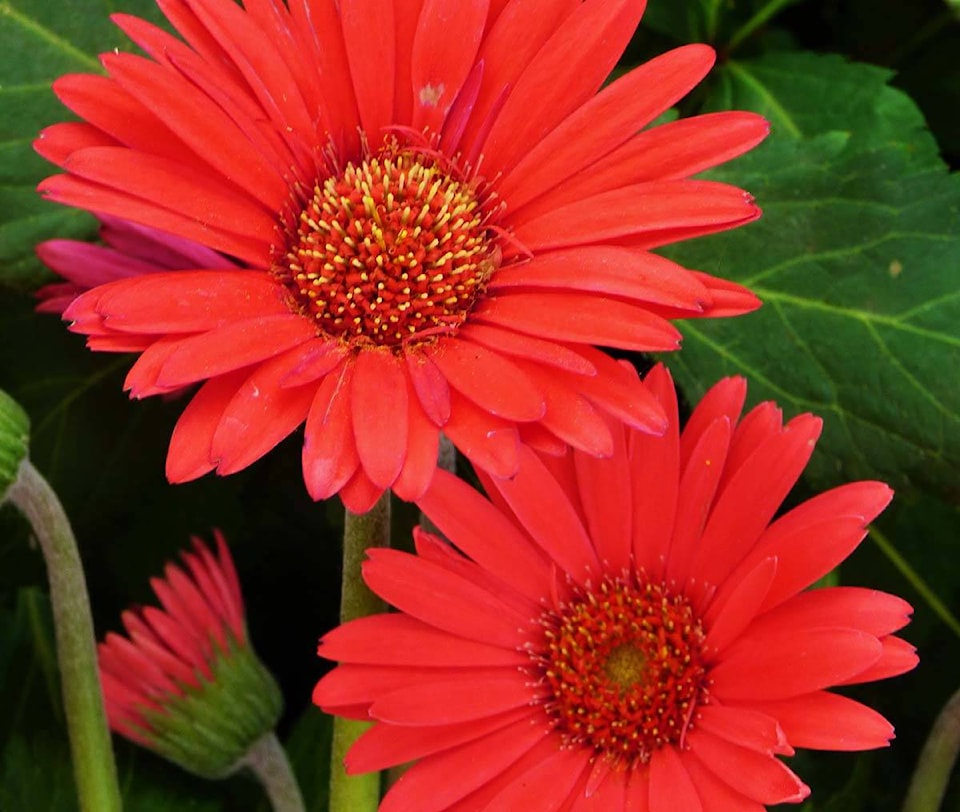The hot summer weather often takes its toll on our gardens, as evidenced by the crispy lawns (for those that follow the water restrictions), hanging baskets whose primary colour is brown, and the cool season edibles, such as lettuce literally racing to seed.
As the memories of that brilliant but wet spring start to fade, we start craving some fresh blooms in the landscape and one of the best groups of plants to look to are summer-flowering perennials.
Let’s start with Echinacea, or coneflower, because this is one family that comes in a diversity of colour to suit even the most discriminating of tastes, although many of the newer introductions have not been overwintering well here on the ‘wet’ coast.
So let’s focus on some tried and true cultivars such as ‘Magnus’ (pinkish-purple), ‘White Swan’ and the magenta ‘Ruby Star’ (or ‘Rubinstern’), all of which have proved themselves in our gardens for more than a decade now.
For the less traditional flower colours of yellow, orange and red, I suggest the ‘Cherokee Spirit’ strain, which has excellent vigour – although you will have to choose plants in bloom in order to get the colours you desire.
Black-eyed Susan or Rudbeckia is another reliable choice for midsummer blooms and ease of care. Top of my list is Rudbeckia fulgida ‘Goldsturm,’ with its abundant golden-yellow petals that surround a brown cone – it looks stunning when paired with the purple flowers of either gayfeather (Liatris spicata), or Russian sage (Perovskia), which bloom at the same time.
‘Goldsturm’ can get a little too large for smaller urban gardens or townhouses, so for these I suggest the compact form ‘Little Goldstar,’ which maxes out at 14-16” high and wide.
The gloriosa daisies (Rudbeckia hirta) are also in peak form at this time of the year and come in many cultivars, including ‘Irish Eyes’ (green cone), ‘Cherry Brandy’ (burgundy-red blooms), ‘Cappuccino’ (bicolor flowers), ‘Tiger Eye’ (double gold) and ‘Toto’ (compact growth habit).
Even though these are hardy to Zone 5, they are not particularly fond of our wet winters and often rot out, so plant these under the overhang of the house or in a well-drained raised bed.
There is also a new intergeneric cross of Echinacea purpurea and Rudbeckia hirta called Echibeckia available in the Summerina series as yellow, orange and brown (with more cultivars on the way).
This hybrid is floriferous, long-blooming, sterile (no self-seeding), fast growing, Zone 6 hardy and even deer resistant due to its hairy foliage – so it has a lot going for it.
Another recent introduction of note are the hardy Gerbera Daisies sold under the Garvinea line, which includes 24 colour varieties.
Although smaller in bloom (2” wide) than the traditional Gerbera daisies, the Garvinea series is Zone 7 hardy and flower from late spring until the first frosts, with regular deadheading.
They also broaden the colour palette by going beyond the purples and golds of Echinacea and Rudbeckia, into such eye-catching hues as hot pink (‘Sweet Sixteen’), honey yellow (‘Sweet Smile’) and a true orange (‘Sweet Glow’).
Bee-Balm (Monarda didyma and its hybrids) is another summer staple and a must-have if you want to attract hummingbirds.
A couple of newer cultivars to look for include ‘Bubblegum Blast’ (intense pink) and ‘Purple Rooster’, although many of the old-fashioned varieties such as ‘Jacob Cline’ (scarlet), ‘Blue Stocking’ (violet), ‘Raspberry Wine’ (reddish-purple) and ‘Marshall’s Delight’ (hot pink) are easy to find at this time of year.
For those gardeners with smaller spaces or containers, try the compact ‘Fireball’, ‘Petite Delight’ or ‘Pardon my Purple’.
Mike Lascelle is a local nursery manager and gardening author (hebe_acer@hotmail.com).
